![]()
![]()
![]()
Use LEFT and RIGHT arrow keys to navigate between flashcards;
Use UP and DOWN arrow keys to flip the card;
H to show hint;
A reads text to speech;
74 Cards in this Set
- Front
- Back
|
Crew duties |
Helmsman Lookout Tow Watch Anchor Watch Assist piloting and navigation Rig towing/Mooring Lines Act as boat swimmer Administer first aid Operate DC equipment |
|
|
PEACE |
Planning Event Asset crew Asset boat Communication Environment |
|
|
Situations that cause fatigue |
Operating in extreme hot or cold conditions Eye strain Effort of holding on Stress Exposure to noise Exposure to sun Poor physical conditioning Lack of sleep Boredom |
|
|
Symptoms of fatigue |
Inability to focus or concentrate Mental confusion Decreased coordination Increased irritability Decreased performance Decreased concern for safety |
|
|
Preventing Fatigue |
Adequate rest Appropriate dress for conditions Rotate crew duties Provide food and refreshments Observe other crew members |
|
|
Causes of motion sickness |
Stress Rolling/pitching Chart work Focusing on chartplotter |
|
|
Symptoms of motion sickness |
Nausea and vomiting Increased salivation Unusual paleness Sweating Drowsiness Weakness Stomach discomfort |
|
|
Types of bleeding |
Arterial Venous Capillary |
|
|
Amount of blood in the body |
10 pints |
|
|
Best method to control bleeding |
Direct pressure |
|
|
Applying a tourniquet |
2-3" above the wound Wrap limb twice and secure Attach note with location and time applied Treat for shock |
|
|
Causes of burns |
Thermal Chemical Sunburn Electrical shock Radiation |
|
|
Burn classes |
Superficial Partial-thickness Full-thickness |
|
|
First degree first aid |
Immerse in cool water Cover loosely with clean dressing |
|
|
Second degree first aid |
Same treatment as first Don't break blisters |
|
|
Third degree first aid |
Loosely cover Cool the burn Separate fingers and toes Don't remove clothing Treat for shock Obtain medical care Monitor airway Assess vitals every five minutes |
|
|
Signed of hypothermia |
Slow, weak pulse Unconsciousness Cold pale skin Shock Shivering Clouded mental capacity Slow breathing Dilated pupils Slurred speech Loss of coordination |
|
|
Staar model |
Spread out Transfer Avoid Accept Reduce |
|
|
Team coordination skills |
Leadership Decision making Effective mission analysis Errors and judgment chains Situational awareness |
|
|
Stability |
The ability of a vessel to right itself after heeling |
|
|
Types of forces that effect stability |
Static StaticDynamic Dynamic |
|
|
Types of stability |
Longitudinal Transverse |
|
|
Buoyancy |
Upward force of water displaced by the hull |
|
|
Center of gravity |
The point which the boat acts vertically downwards |
|
|
Variation |
The difference between true North and magnetic north |
|
|
Deviation |
Amount of influence on a compass and electronics from meal objects around it |
|
|
3 minute rule |
Distance traveled in yards in 3 minutes divided by 100=speed |
|
|
6 minute rule |
Distance traveled in NM in 6 minute multiplied by 10=speed |
|
|
Search pattern first letter |
P- parallel C- creeping S-square V-sector B-barrier T-trackline |
|
|
Search pattern second letter |
S-Single Unit M-multi unit |
|
|
Search pattern third letter |
N-non return R-Return or radar |
|
|
What is first type of search for missing or overdue vessel |
trackline |
|
|
When is parallel search used |
Covers large search areas |
|
|
When is creeping search used |
High probability object is at one end of the area than the other |
|
|
When is sector search used |
Small search areas and small search objects |
|
|
Preferred track spacing for PIW |
200 yards or .1NM |
|
|
Recommended max towing speed |
6 knots |
|
|
Causes of shock |
Trauma Allergic reactions Drugs Hypothermia Toxins Emotional Near drowning |
|
|
Symptoms of shock |
Restless Find Thirsty Nausea Frightened Weak Anxious Dizzy |
|
|
Signs of shock |
May be alert to unconscious Shallow, rapid, irregular breathing Weak and rapid pulse Cold and clammy skin Dilated pupils |
|
|
Heat Rash |
Sweat ducts become blocked Busy can't perspire Decreased cooling of the skin Small red bumps on skin Severe itching Remove victim from environment and wash affected areas |
|
|
Heat cramps |
Painful contractions of the extremities and abominable wall Remove victim and drink cool fluids Don't re-expose to hear for at least 12 hours |
|
|
Heat exhaustion |
Dizziness, headache, nausea, weakness, clumsy gait and muscle cramps. First aid and rapid removal from environment |
|
|
Heat stroke |
Major Medical Emergency Red hot dry skin, lack of sweating, body temp over 105, headache, weak and rapid pulse, confusion, violence, brain damage Remove to cooler environment and seek medical assistance |
|
|
When are navigation lights displayed |
30 minutes before sunset to 30 minutes after sunrise Reduced visibility |
|
|
Masthead light color and arc of visibility |
White 225° End 22.5° abaft beam |
|
|
Side lights color and arc of visibility |
Red port/green starboard 112.5° each side |
|
|
Stern light color and arc |
White 135° |
|
|
Towing light color and arc |
Yellow 135° Displayed above Stern light |
|
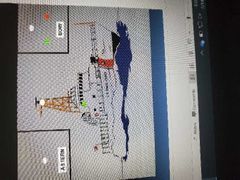
|
Power driven vessel |
|
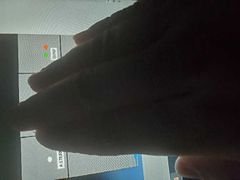
|
Sailing Vessel |
|
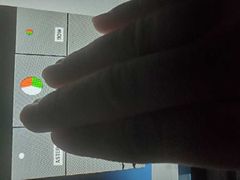
|
Sailing Vessel less than 20M |
|
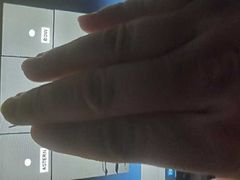
|
Sailing/Oars less than 7M |
|
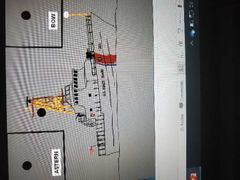
|
At anchor less than 50M |
|
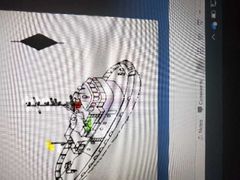
|
Power driven vessel towing astern Tow exceeds 200 M |
|
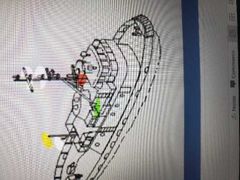
|
Power driven vessel towing astern less than 50M Length of tow 200M or less |
|
|
Short vs prolonged blast |
Short-1 second Prolonged- 4 to 6 seconds |
|
|
One short when inland and in sight Meeting it crossing within 1/2 mile |
I intend to leave you on my port side I intend to overtake you on my starboard side |
|
|
Two short when inland and in sightMeeting it crossing within 1/2 mile |
I intend to leave you on my starboard side I intend to overtake you on your port side |
|
|
Danger signal |
5 short blasts |
|
|
One prolonged blast at intervals of 2 minutes |
Underway making way |
|
|
Two prolonged blasts at intervals of 2 minutes |
Underway not making way |
|
|
One prolonged and Two short blasts at intervals of 2 minutes |
Sailing Vessel Not under command Restricted in ability to maneuver Constrained by draft Fishing Trawling Towing or pushing ahead |
|
|
17 distress signals |
Red star shell Fog horn continuous Gin fired at interval of 1 minute Flames on boat Black ball and black square over orange background Mayday by radio Parachute red flare Dye marker November over Charlie Waving arms Square flag over ball Radio telegraph alarm Radio telephone alarm EPIRB Orange smoke High intensity flashing 50-70 times per minute (inland only) |
|
|
Things to report as lookout |
Vessels Land Obstructions Lights Buoys Beacons Discolored water Reefs Fog signals Whales Sea turtles |
|
|
29' underway limits |
8 hours under 4' 6 hours over 4' |
|
|
Strobe light characteristics |
Light emits approximately 50 to 70 flashes or minuteOperates minimum of 8 continuous hours but typically 18 plus hoursVisual range is 2 to 5 miles |
|
|
MK 79 Characteristics |
Single red star flareAltitude of 250 to 650 feetBurns for 4.5 secondCandlepower of 12,000 |
|
|
Signal whistle characteristics |
Can be heard up to 1,000 yards |
|
|
MK 124 Characteristics |
Day orange smoke and night red flareTwo raised bands at the night endEach side burns about 20 seconds |
|
|
PLB Characteristics |
Broadcasts on 406 MHz and 121.5 MHzAccurate within 3 NM within 90 minutes |
|
|
MK127 Characteristics |
Altitude of 650-700 feetBurns for 36 seconds125,000 candlepowerDecends at 10-15 feet per second |
|
|
Boat Outfit |
Bow Anchor Locker:Anchor 7 lb Danforth FX-11Anchor Chain ⅜" x 9'Anchor Line 1½" x 150' DBNTowline 2 ⅓" x 150' DBNThimble ½"Swivel ⅜"2 Fenders 5½ x 20" w/ ⅜" x 10' Line2 Mooring Lines 2" x 30'2 Bungee Cords 10"Anchor Bag Cuddy Cabin:2½ lb Class B1 Fire Extinguisher (port side)Tow Light Mast (port side)Bag containing (port side): 2 Flashlights, Portable Air Horn, spare horn canister, sister lol switch w/lanyardFirst Aid Kit (stbd side)Flag Mast 30" w/ USCG and National Ensigns (stbd side)Handheld spotlight (stbd side)Windshield debris screen Main Cabin:Boat Operators HandbookEmergency Egress Hammer Tool(above/aft of chart tableNavigation Kit including: flashlight, stopwatch, pencil sharpener, anemometer, search pattern slide rule, nautical slide rule, parallel plotter,5 pencils, dividers, Tide Book, local charts, chart 1, note pad, Coast Pilot, light list, USCG Navigation Rules Handbook, compassGear bag containing: ⅜"screw pin shackle, 9' skiff hook line, p-6 tie down strap2 10" bungee cordsLaminated placard: M240 Loading/Unloading instructionsSpare crew headset Aft Stbd Main Cabin Storage:Storage NetPyro box w/ 6 MK 127A1Portable O2 Delivery System Aft Weather Deck:Tow Line, 2⅓" x 150' DBNTow reel coverThrow bag w/ ⅜" x 75' line and snap hook Center Aft Deck Locker:Ammo storage racksSpare parts and tool bag containing: 2 quarts of 10w30 oil, 1 quart sea star steering fluid, screwdrivers, metric wrench set, pliers, rags, assorted fuses, hand pump, spark plug w/ 4" extension, prop but wrench Engine Well:24" Life ringDistress marker lightBoat him with Skiff hook attachment Trailer Storage Locker:Hand pump for hubsSports needleBottle jack 6 tonLuv wrench 14"4 Wheel chocksWinch handle |
|
|
29 Hull System |
5086 marine grade aluminum with several pipe runs of 6061. Deep-V monohull with pointed bow and flat transom |

